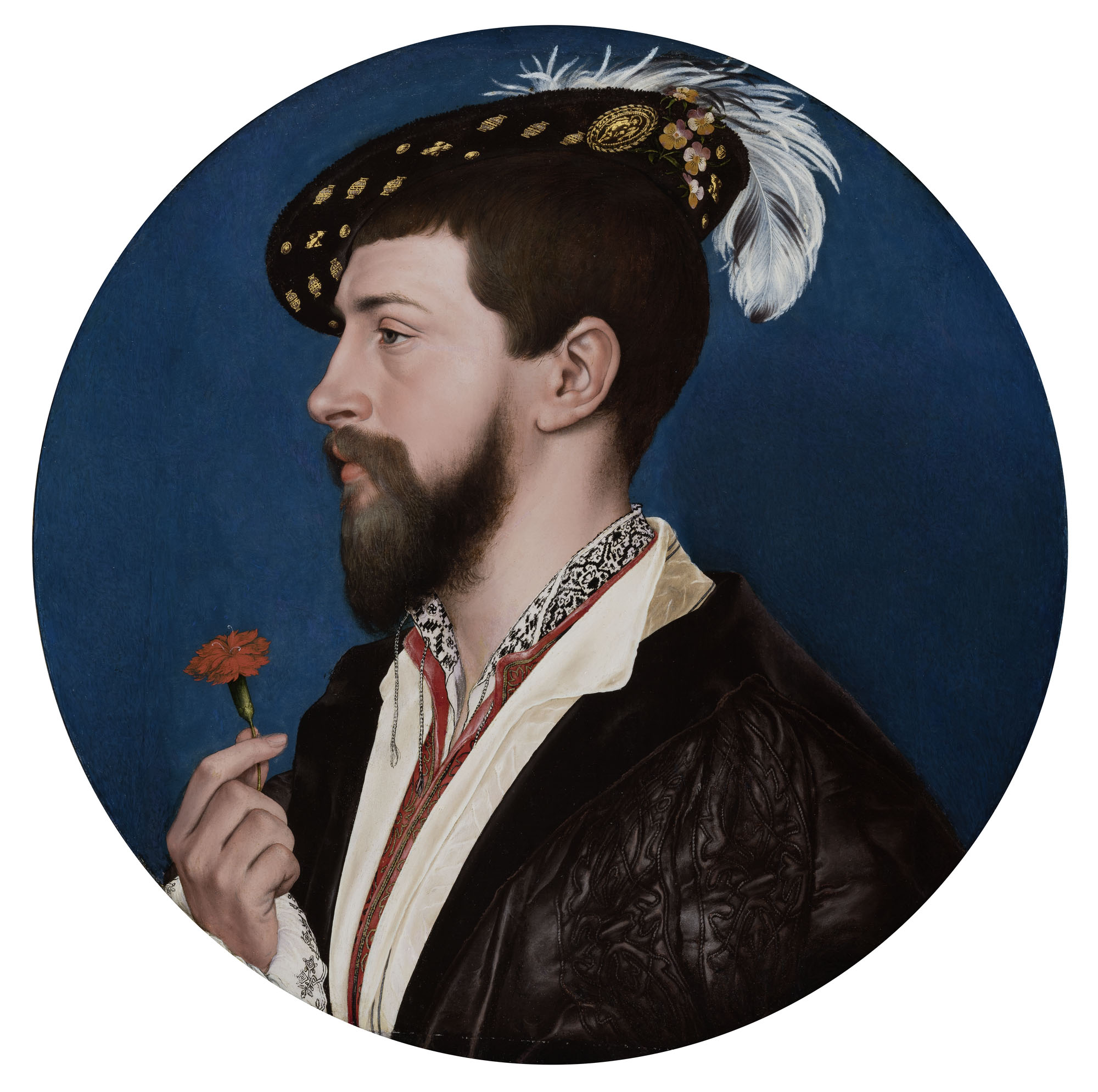Holbein at the Getty
 |
| Hans Holbein the Younger, Simon George of Cornwall, about 1535–40. Städel Museum, Frankfurt am Main |
The Getty Center's "Holbein: Capturing Character in the Renaissance" is the first substantial presentation of the artist in the U.S. Co-organized with New York's Morgan Library & Museum, it brings together 23 Holbein paintings, plus no-less compelling drawings, woodcut-illustrated books, and Renaissance jewels. Whether you know nothing about art or everything about art, there is something magical about a hyperreal human likeness. For that Holbein has few rivals.
German-born and active in Switzerland, Holbein has become identified with his portraits of Britain's Henry VIII. None are in this show, and you won't miss Hank one bit. Nor is the omission of the Frick Collection's Sir Thomas More felt so keenly as I thought it might be. (Sir Thomas will appear in the Morgan Library's presentation.) As the selection at the Getty indicates, Holbein didn't save his talents for the richest and post powerful. Some of the most amazing paintings here are of unknown sitters, and works just inches across display the same uncanny naturalism as larger ones.
The name Simon George of Cornwall has survived down the ages, but virtually nothing is known about him except that he's the subject of one of Holbein's most perfect paintings. The carnation and enameled violets may indicate it was a marriage portrait, but that's speculation. So is the idea that the circular form indicates eternity, suited to a painting that has perpetuated Simon's name and appearance.
One indication of that: Kehinde Wiley adapted this painting twice. One version is a portrait of a do-ragged Dodger fan now in the Crocker Museum, Sacramento.
 |
| Hans Holbein the Younger, A Lady with a Squirrel and a Starling (Anne Lovell?), 1526-28. National Gallery, London |
For fascinating headgear, it's hard to top A Lady with a Squirrel and a Starling. When it came up for sale in the early 1990s, J. Paul Getty, Jr., helped acquire it for the U.K. National Gallery (perhaps to block Dad's Malibu museum from taking it out of England).
 |
| Installation view with An Allegory of Passion, about 1532-36 |
The Getty Museum did manage to buy a great Holbein portrait drawing from a Chatsworth sale, plus an engimatic painting. The lozenge-shaped An Allegory of Passion was purchased in 1980, when J. Paul Getty's estate was still in probate hell. It was then only a speculative "attributed to Holbein" with few parallels. The exhibition is showing the Allegory of Passion in a lucite case so that both sides are visible. The back is unpainted but carved, with an HP monogram indicating ownership by Henry, Prince of Wales, and a double knot of unknown significance. Nearby are some of Holbein's designs for decorative "Arabesques" closely resembling those on the four corners of the Getty painting. Still a mystery is whether the Getty painting (with Petrarch quote) was unique or part of a series on the progress of love.
 |
| Hans Holbein the Younger, Tantalus, 1535-40 (pen and black ink with watercolors). National Gallery of Art |
The show has a selection of hat badges (featured in many of the portraits) and Holbein's designs for personal medallions, themselves integral parts of 16th-century branding.
You won't find a more stupendous Renaissance show this season west of Boston. "Holbein: Capturing Character in the Renaissance" runs through Jan. 9, 2022.
 |
| Hans Holbein the Younger, designs for medallions, about 1532-43. British Museum |
 |
| Hans Holbein the Younger, Henry Howard, Earl of Surrey, about 1532-33. Royal Collection Trust / (c) Her Majesty Queen Elizabeth II |
 |
| Hans Holbein the Younger, Richard Southwell, 1536. Uffizi, Florence |
Comments
Then again, a newer cultural form known as rap music has risen over the past few decades even though different styles of tunes and rhythms aren't technically archaic.
If Holbein were into abstract-hipster-type artwork, LACMA would have wanted to play host to the exhibit and circumvent the Getty. (I'm being only partly facetious)
He designed robes and accessories for Henry VIII. How hip is that?
He was also something of an "abstract" artist. His portraits separated the subjects from their worlds by placing them in front of colored backgrounds and/or constructing their identities symbolically (e.g., squirrel in Lady with a Squirrel).
It's funny how your effort to make LACMA look bad backfires.